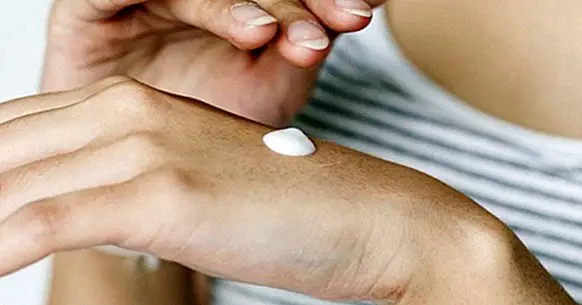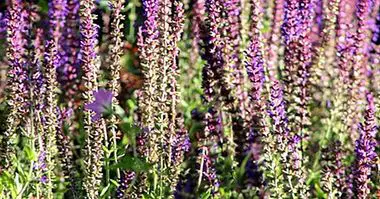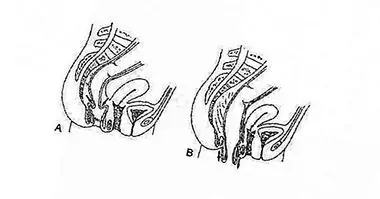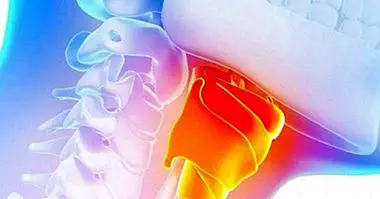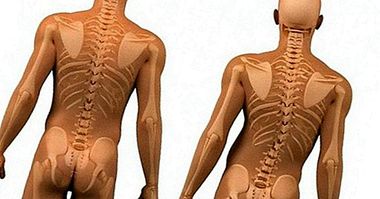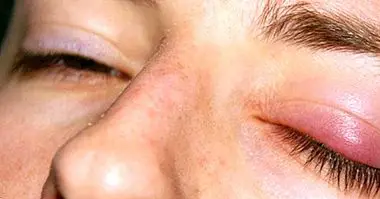The 4 types of skin (and how to care for them)
The skin is not only the largest organ of the body, it is also one of the most important. It has life and specific needs according to the type that each one of us has.
For identify which of the skin types we have , we can observe certain characteristics that identify them and thus know what is the appropriate way to take care of it according to its current state.
- Related article: "Why do we get goosebumps? The mechanics of bristly hair"
Types of skin
Observing the texture, color, characteristics and reactions we can determine what type of skin we have and take care of it with products that balance it and keep it in good condition .
1. Normal
We all want this type of skin, but it is actually the least common. It's a skin that It is balanced by not being too fat or too dry . It has fine pores, good blood circulation, smooth and smooth velvety texture, absence of impurities, and is not sensitive or irritated easily.
Normal skin is common in children and before adolescence, but hormonal changes affect it a lot and cause changes in the skin.
Even though we already saw that normal skin does not suffer from fat or dryness, it is important to be cared for with adequate products to avoid a mismatch that results in excess fat or irritation , especially because over the years normal skin will stop having adequate hydration and lose elasticity as a result of natural aging. So, he is not free from needing care, which should start at an early age.
2. Fat
This type of skin is known as "fat" because It is characterized by an increased production of sebum . This overproduction is known as seborrhea.
To recognize the oily skin it is necessary to check if the pores are enlarged, the face is constantly bright and the skin looks thickened and pale because the blood vessels are not visible.
Due to these factors This type of skin is prone to acne , sometimes mild, but severe acne can also be not only on the face but also on the neck, shoulders, back and chest. In a vicious circle this seborrheic process causes the skin to redden and become inflamed.
For that, you have to know that one way to avoid all these effects of oily skin is prevent the overproduction of sebum which on the one hand is due to genetics and hormonal imbalances, but which can be reduced with proper nutrition, proper cleaning routine, and the use of cosmetics appropriate to the type of skin.
So one of the objectives in the care of this type of skin is that this seborrheic hyperproduction does not occur, and that once the pimples have appeared, the skin remains clean to avoid infection and the skin is injured.
Also, as we have already seen, a high propensity for severe acne can cause irreversible skin lesions , so the recommendation is to have regular check-ups with a dermatologist.
- You may be interested: "Dermatilomania (excoriation disorder): symptoms and causes"
3. Dry
This type of skin produces less sebum than normal skin and as a consequence lacks the lipids that retain moisture and that form a protective layer . In dry skin there is a deterioration of this function of the barrier. That is why, unlike the oily skin, at some stage of our life we will all suffer from dry skin to a greater or lesser extent, as a cause of sebum reduction is the aging of the organism.
However, even though it is very likely that we all arrive at the moment of having dry skin, dermatologists identify three levels of dryness :
Dry Skin
It feels tight, fragile, rough and has a dull color and appearance. The elasticity is weak .
Very dry skin
There is peeling or lamellae consistency. There is an obviously rough or full of spots or as if I suffered premature aging , there is mild itching.
At this level, this type of skin should be treated by a dermatologist because it can cause severe irritation and risk of infection.
Extremely dry skin
The hands, feet, elbows and knees are prone to extreme dry skin. It is characterized by severe roughness , cracked appearance such as cracks, calluses, desquamation and severe and frequent itching.
In this phase of dryness, undoubtedly a dermatological revision is required to determine the most efficient treatment that helps the skin recover its sebum level and normal hydration before a severe infection is caused.
If after reading the levels of dryness you identify that your skin is dry but still in a normal phase, it will be enough to use products suitable for this type of skin that provide adequate hydration and help to balance the production of sebum.
4. Mixed
As we have already seen, oily skin has an excess of sebum and a severe decrease in sebum. In the case of the mixed skin type, the two types of skin are found and are manifested mainly in the face.
To identify if your skin belongs to this type, you have to know that in the mixed skin of the "T" zone (front, chin and nose) is fat, enlarged pores are noted and with some impurities or traces of acne while the cheeks have normal skin or tend to dry.
Due to these characteristics of the mixed skin, the products to hydrate and protect it have to be specific for this type of skin. In the market they are easily identified and provide an adequate balance to avoid dryness and overproduction of sebum.

